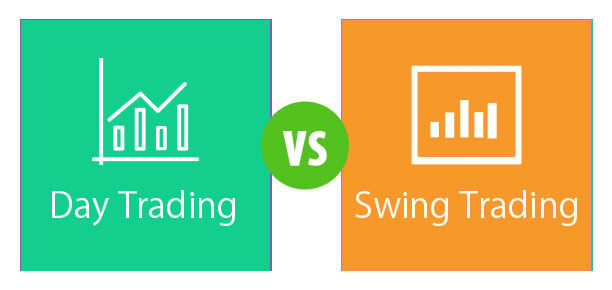Trading Tactics: IntraDay Trading vs Swing Trading
Discover the key differences between IntraDay Trading and Swing Trading and why choosing the right tactic is crucial for success.

Image courtesy of Mike Anderson via Pexels
Table of Contents
Hey there, fellow traders! Today, let's dive into the exciting world of trading tactics and explore the key differences between IntraDay trading and Swing trading. Whether you're a seasoned trader or just starting out, understanding these two popular strategies can help you make more informed decisions in the market.
When it comes to trading, there are countless strategies one can employ to navigate the ups and downs of the market. IntraDay trading and Swing trading are two common approaches that traders use to capitalize on short-term price movements. It's crucial to grasp the distinctions between these strategies to tailor your trading style to your specific goals and preferences.
IntraDay Trading
IntraDay trading involves buying and selling securities within the same trading day. This fast-paced strategy requires traders to closely monitor the market throughout the day and make quick decisions to capitalize on price fluctuations. The main advantage of IntraDay trading is the potential for quick profits, as traders aim to take advantage of short-term market movements.
Don't miss out on our trading tactics newsletter!
Stay ahead of the game with exclusive tips and insights delivered to your inbox.
However, IntraDay trading also comes with its own set of challenges. The high frequency of trades can lead to increased brokerage fees and transaction costs. Additionally, the fast-paced nature of IntraDay trading requires traders to stay focused and disciplined to avoid making impulsive decisions based on emotions.
Popular IntraDay trading techniques include scalping, momentum trading, and range trading. Scalping involves making a large number of small trades to capitalize on minor price movements, while momentum trading involves following the direction of the market trends. Range trading, on the other hand, involves identifying key support and resistance levels to trade within a specific price range.
Swing Trading
Swing trading, on the other hand, involves holding onto securities for a longer period, typically several days to weeks. This strategy aims to capitalize on the "swings" or fluctuations in asset prices over a longer time frame. Swing traders often use technical analysis to identify entry and exit points based on chart patterns and trends.
One of the primary advantages of Swing trading is that it offers more flexibility compared to IntraDay trading. Traders can hold onto positions for a longer period, allowing them to ride out short-term market fluctuations and potentially capture larger price movements. However, Swing trading also requires patience and the ability to withstand market volatility.
Popular Swing trading techniques include trend following, mean reversion, and breakout trading. Trend following involves identifying and following the direction of major market trends, while mean reversion aims to capitalize on price reversals after an asset has deviated from its average price. Breakout trading involves entering a trade when the price breaks above or below a significant level of support or resistance.
Discover the key differences between IntraDay Trading and Swing Trading and take your trading game to the next level! [insert link] #trading #investing #successTweet Quote
Key Differences Between IntraDay Trading and Swing Trading
When comparing IntraDay trading and Swing trading, several key differences emerge:

Image courtesy of via Google Images
1. Time Frame: IntraDay trading focuses on short-term price movements within the same trading day, while Swing trading looks at longer-term price fluctuations over several days to weeks.
2. Frequency of Trades: IntraDay trading involves a high frequency of trades, while Swing trading typically involves fewer trades due to the longer holding period.
3. Risk Management: IntraDay trading requires traders to manage risk more actively due to the fast-paced nature of the strategy, while Swing trading allows for more strategic risk management over a longer time frame.
4. Profit Potential: IntraDay trading has the potential for quick profits based on short-term price movements, while Swing trading offers the opportunity to capture larger price movements over a longer period.
Factors to Consider When Choosing Between IntraDay and Swing Trading
When deciding between IntraDay trading and Swing trading, it's essential to consider several factors:
Risk Tolerance: Evaluate your risk tolerance and comfort level with market volatility when choosing a trading strategy.
Time Commitment: Consider the amount of time you can dedicate to trading and how closely you want to monitor the market throughout the day.
Market Conditions: Assess current market conditions and determine which strategy aligns best with the prevailing market trends and volatility.
Trading Goals: Define your trading goals and objectives, whether it's to generate quick profits or capture larger price movements over a longer period.
Don't miss out on our trading tactics newsletter!
Stay ahead of the game with exclusive tips and insights delivered to your inbox.
Conclusion
Trading tactics play a crucial role in shaping your success in the market. By understanding the key differences between IntraDay trading and Swing trading, you can tailor your trading strategy to your unique goals and preferences. Remember, there is no one-size-fits-all approach to trading, so experiment with different strategies and find what works best for you. Happy trading!
Related Topics
- What is Swing Trading
- The Fundamentals of Swing Trading
- Top Swing Trading Strategies for Maximum Profits
- BANKNIFTY Options Trading Tips
- NIFTY Options Trading Tips
- Swing Trading using Technical Analysis
- Mistakes to Avoid when Swing Trading Stocks
- Swing Trading Stock Screener - India
- How to Select Swing Trading Stocks
- Stock to Buy Today India
- Stock to Buy Tomorrow India
- Recommended Books to Learn Swing Trading
- IntraDay Trading vs Swing Trading
- Best Stocks for Swing Trading Today
- Long Term Stocks to Buy
- Technical Analysis Guide
- Technical Analysis Guide - HTML Version
- How to Open Trading Account in India
- Stock Trading Signal Apps
- Intraday Trading Tips Today
- Best Penny Stocks to Buy Today
- Short Term Stocks to Buy Today
- Best 10 Stocks to Buy Today
- Stock Trading Tips Today
- How to Invest in Shares - Beginners Guide
- Mistakes to avoid when Investing in shares
- Recommended Books to Learn Trading
- Swing Trading Books
- Risk Management in Trading
- What is trailing StopLoss
